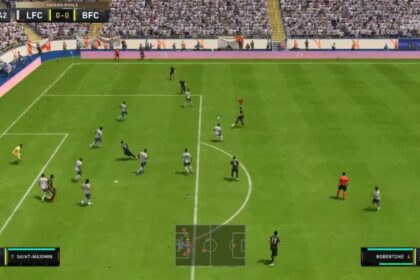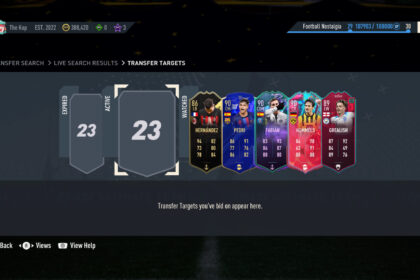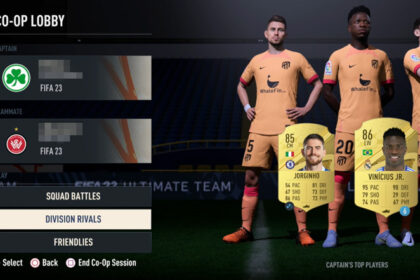The famous tiki-taka tactic has been directly responsible for the success of some of the greatest teams in history, most notably Pep Guardiola’s Barcelona.
Many will go as far as to say that the tactic revolutionized football, and there are certainly arguments that can be made for that theory.
Tiki-taka is a system of football that obsesses over keeping the ball, dominating the opponent, and creating chances with eye-of-the-needle passing and great attacking movement.
The system is a bit difficult to replicate in an exact manner in a game like FIFA due to the way that the AI is set up. However, we can try. In this guide, I have put together what I believe is the best tiki-taka possession tactic for FIFA 23.
Squad

My example has been put together with the Barcelona squad because of the club’s history with the tactic, but you can try it with any team that has these basics:
- A goalkeeper that is good with his feet
- Technical outfield players
- Fullbacks with very good passing and crossing
- A midfielder with excellent ball control and dribbling. A strong weaker foot is a plus.
- A midfielder with excellent vision and passing
- Wingers with pace, great ball control, and finishing
- A center-forward with good link-up play (passing, ball control, strength)
Although the tiki-taka system’s requirements run deeper than these basics, having them within your squad is a good place to start.
Formation
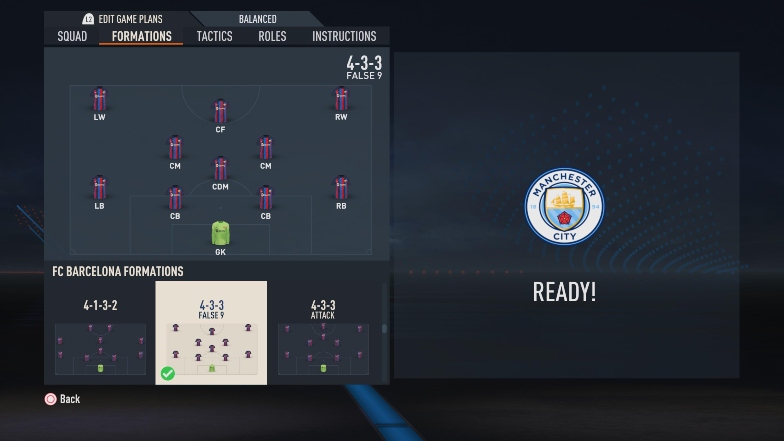
The formation required is a 4-3-3 with a false 9. This means you’ll be using a center-forward that plays deeper than a regular striker does.
Lewandowski is the first-choice striker in the current Barca team. He’s not the ideal player for the tiki-taka system, but he can function as a deep-lying forward, so he is usable.
Tactics
The tiki-taka system is not as aggressive off the ball as some other iterations of total football that we’ve seen in the past. However, it is still important to adjust a few things tactically in defense and offense.
Defense
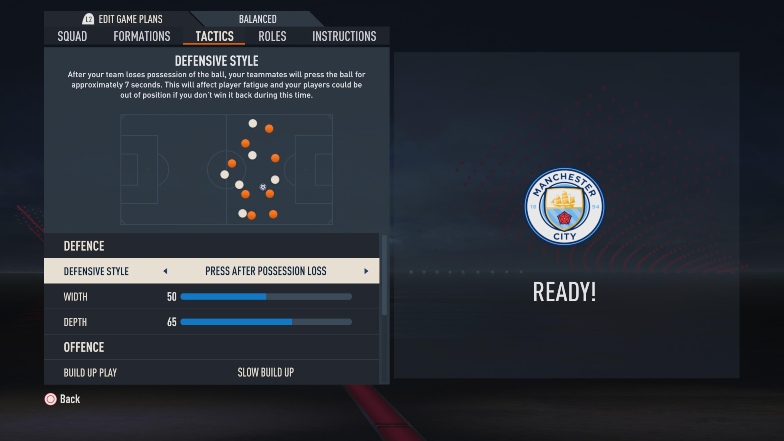
Since the system relies on hogging the ball for as long as possible, you want your players to press the opponent immediately after losing possession.
Your best chance of winning the ball back is often immediately you lose possession in the moments before the opponent can decide what they want to do with the ball.
With the “press after possession loss” option selected, the players within the zone where possession is lost will look to win it back within the first few seconds.
Keep the width at a neutral level, and allow the defense line to come up so your fullbacks are closer to the action during the attacking phases of play.
This means you’ll have to watch and spring offside traps during counter-attack opportunities for the opponent, so it requires a lot of awareness and concentration.
Offense

While attacking, the tiki-taka system favors a patient, slow build-up approach that is similar to Pep Guardiola’s tactics at Manchester City. However, the tiki-taka’s approach to chance creation with the movement of players is a bit different.
With the “possession” option selected, the AI will try to replicate the “triangular passing zones” that the Barcelona team was well-known for in the past.
At any given time, the player in possession of the ball has at least two players in close proximity, often forming a triangular shape around the opponents pressing the ball. This looks a bit like playing a rondo session on the training ground as the player in the middle tries to chase the ball down.
It’s an effective way to keep possession of the ball and make the other team’s players tire more easily while moving the ball forward.
Again, keep the width neutral here too. Set four players to be in the box for crosses because this system requires as many people as possible in the build-up play before you get to the 18-yard area.
If too many players are making runs into the box, it might be harder to create those triangular passing zones while you’re still building up. With four players selected, your options for passing/crossing the ball into the box will often include the LCM, LW, RW, and ST.
Player Instructions
These player instructions double down on trying to control the behavior of the players on and off the ball.
Goalkeeper
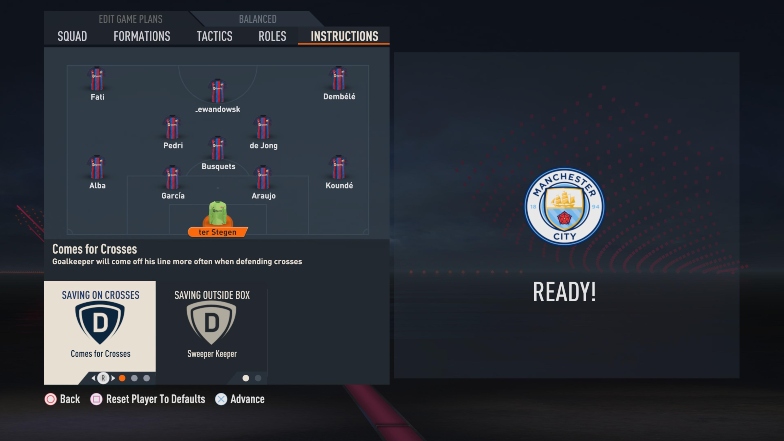
A sweeper-keeper is best for a team playing a high defensive line, so choose the illustrated options for saving on crosses and saving outside the box.
Center Backs
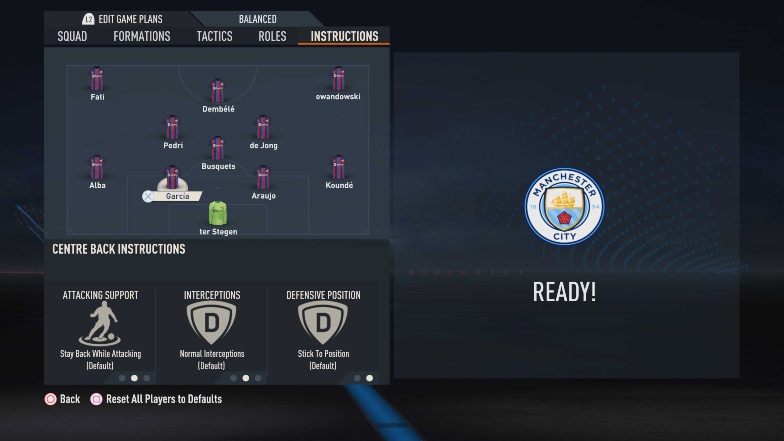
Keep to the center-back instructions as is. As long as they have good technical ability, you don’t need to worry too much about how they are set up.
It is worth noting however that a center-back with excellent passing ability will be useful for the occasional switch of play from the back.
Fullbacks
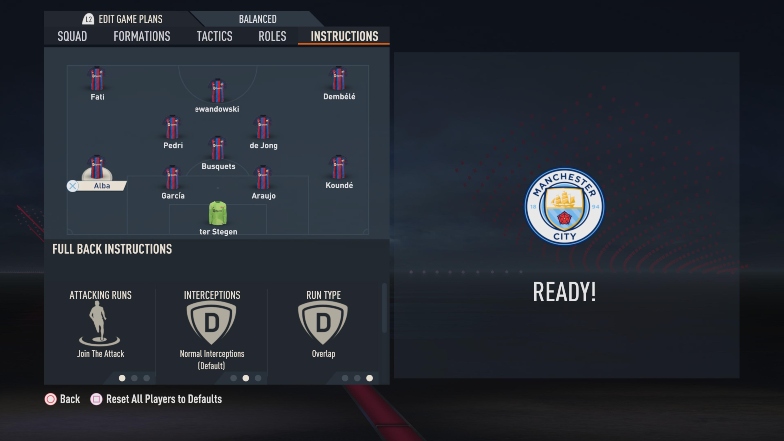
The fullbacks are really important in this system. They will be expected to combine often with the wingers, so you need them to join the attack and overlap as often as possible.
Apart from passing and crossing, pace and stamina are other attributes that could prove very useful for a fullback in this system.
Defensive Midfielder (CDM)
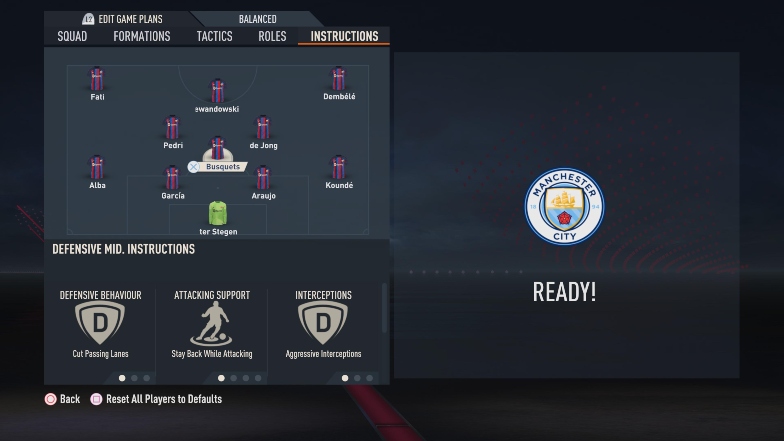
The defensive midfielder here is not just the typical hardman that is only expected to break up play. Apart from providing a passing option for the center-backs, this player also needs to be able to bring other players into play with good passing ability and vision.
Set the player to stay back while the team is attacking, look to intercept passes aggressively, cover central areas of his zone and have the positional freedom of a deep-lying playmaker.
Central Midfielder (LCM)
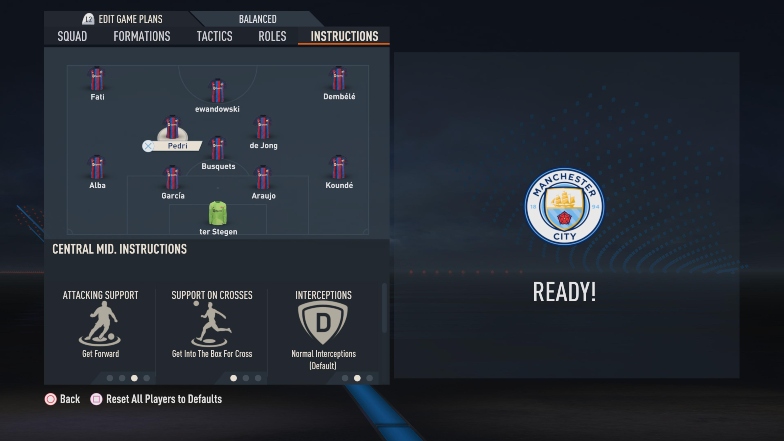
You need a silky-smooth dribbler to carry the ball forward into the attacking third in this position. Think of Iniesta when he played alongside Xavi at Barca.
To achieve this, you need to set the player’s positioning freedom to “free roam”. Get him to go forward as often as possible and arrive in the box for crosses. Leave other options as is.
Central Midfielder (RCM)
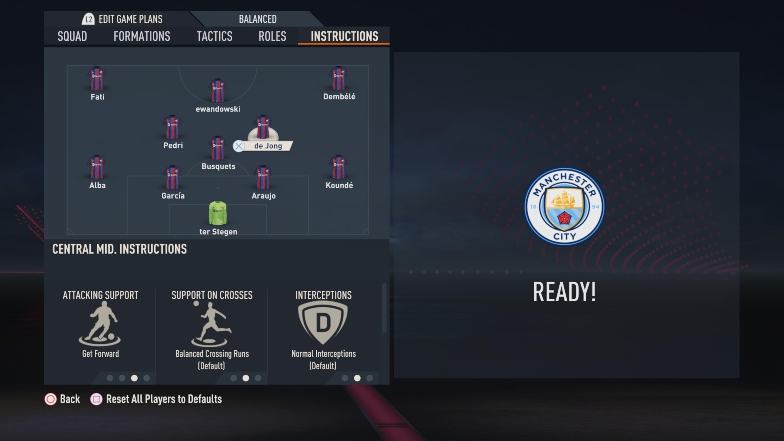
The biggest strength of the player in this position is passing and vision. You should look to involve him in build-up play as often as possible and should be able to support in attack and contribute to defense as well. Set the attacking support instruction to “Get forward” and leave the rest as it is.
Wingers (LW, RW)

Your wingers are your most potent attacking threats in this tiki-taka system. They are the true definition of the modern inside-forwards that most teams using the 4-3-3 seem to deploy.
Set chance creation on both players to “cut inside”, set support on crosses to “get into the box for cross” and leave the rest as is.
Center Forward
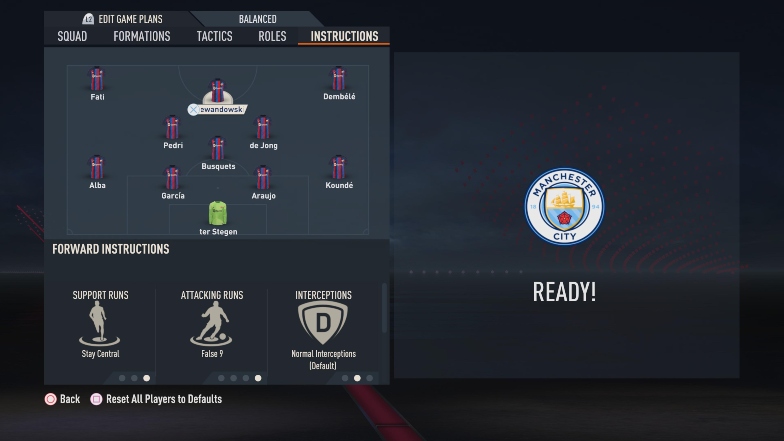
I noticed on FIFA 23 that center-forwards in this 4-3-3 formation tend to drop too deep, so the first thing you want to do is set the defensive support option to “stay forward”.
Then, you should also set support runs to “stay central”, and attacking runs to “false 9”.
This combination of instructions ensures that the player operates mostly in the dangerous areas of the attacking third where he has the best chances to link up with the wide forwards and create chances for himself too.
Final Words
FIFA 23 seems to reward faster-paced, more urgent styles of play than slow, possession-based ones such as the tiki-taka system.
In my tests, I found that this variation of the tiki-taka offers the closest replication of the real-life tactic in a way that is still effective with the AI in the game. If you have the types of players required to make it work, it is definitely worth giving it a go.
If you’re looking for a more defensive tactic that allows you to soak up pressure and focus on hitting opponents on the break, then check out this guide to Jose Mourinho’s “park the bus” tactics for FIFA 23.



